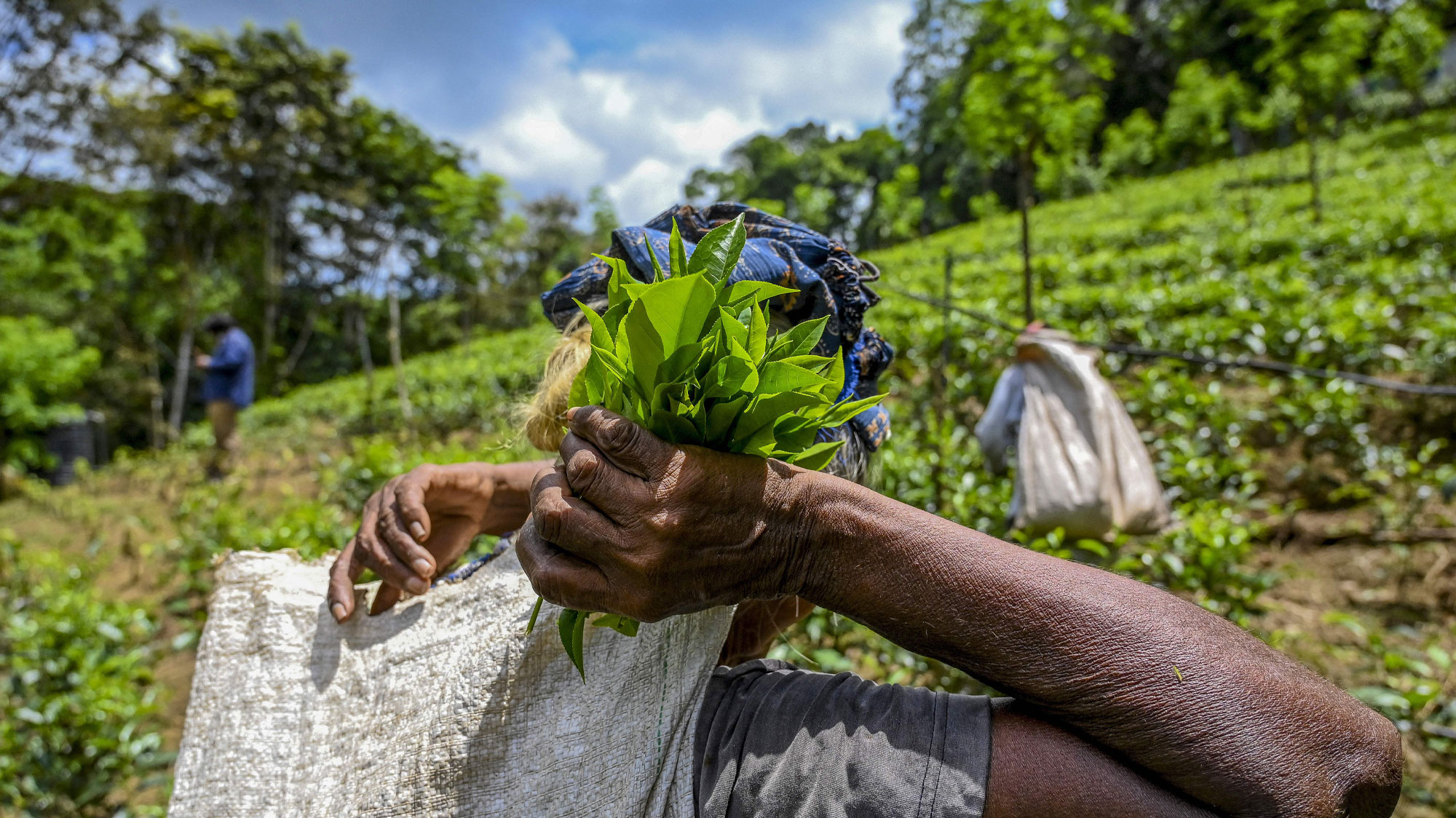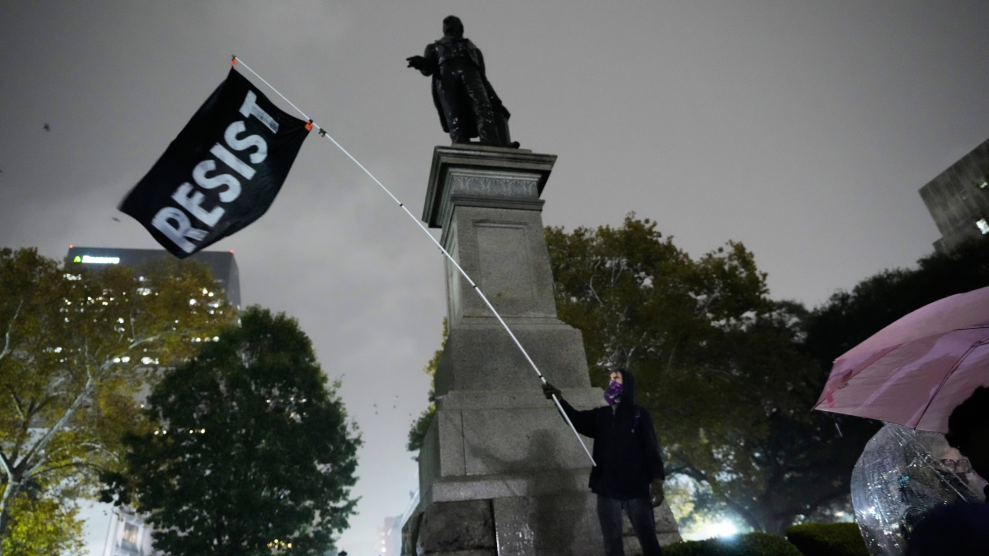In mid-July, Sri Lanka’s government fell, with former president Gotabaya Rajapaksa bolting the country on a pre-dawn flight while protesters frolicked in the pool of his lavish mansion. The island nation of 22 million people, once one of the most prosperous in South Asia, had plunged into a severe economic crisis, characterized by empty grocery shelves, days’ long lines for gasoline, planned electricity outages lasting up to seven hours, and mass protests against the government. What happened? According to one prominent theory, it was all the result of a fateful decree Rajapaksa made in April 2021 to ban synthetic fertilizers and force the nation’s farmers—prodigious producers of rice and tea, among other crops—to embrace organic agriculture.
Writing in The Wall Street Journal opinion page on July 14, Tunku Varadarajan, a fellow at the conservative American Enterprise Institute and at Columbia University’s Center on Capitalism and Society, summarized the case like this: “In an uprising that has its roots in Mr. Rajapaksa’s imperious decision to impose organic farming on the entire country—which led to widespread hunger after the agricultural economy collapsed—Sri Lanka’s people have wrought the first contra-organic national uprising in history.”
Similar takes have emerged from Fox News personality Tucker Carlson, who characterized Rajapaksa’s push for organic agriculture as a disaster-inducing “green new deal,” equating it to the stalled, never-implemented proposal by Rep. Alexandria Ocasio-Cortez (D.-N.Y.) and Sen. Ed Markey (D.-Mass.) (even though their GND never included a fertilizer ban or an organic mandate); and from members of the “ecomodernist” movement—a crew, centered around the Breakthrough Institute think-tank, that favors technology-centered, nuclear-powered responses to environmental crises. In a July 9 post on his Substack blog, Michael Shellenberger, the Breakthrough Institute’s co-founder and former president, opined that the “underlying reason for the fall of Sri Lanka is that its leaders fell under the spell of Western green elites peddling organic agriculture.”
Back in March, months before Rajapaksa’s inglorious exit, the prestigious magazine Foreign Policy ran a similar take on Sri Lanka’s then-already-mounting crisis. Co-authored by BTI executive director Ted Nordhaus and BTI food and farm analyst Saloni Shah, the article suggested that the “ill-conceived national experiment in organic agriculture” had triggered a range of ills—everything from a tumbling currency to rising inflation and poverty rates.
Did that piece foretell the sequence of events that brought down Rajapaksa? And does the situation prove that any push to slash reliance in agrichemicals anywhere will produce “only misery,” as Nordhaus and Shah insisted? Unlike the Fox News and Wall Street Journal commentators, Nordhaus, Shah, and Shellenberger acknowledged that factors apart from organic agriculture played roles in Sri Lanka’s meltdown. But the two deans of ecomodernism also took pains to place the blame squarely on the removal of agrichemicals. Spoiler: Things on the ground in Sri Lanka were quite a bit more complicated than what these tirades suggest.
The fundamental problem with blaming Sri Lanka’s current struggles on the 2021 fertilizer ban is that the economic crisis predates Rajapaksa’s rash move—and may have inspired it.
Former president Gotabay Rajapaksa and his brother, former prime minister Mahinda Rajapaksa, are members of a political dynasty that ruled the nation between 2005 and 2015, and that regained power in 2019, when Gotabay Rajapaksa was elected president. During their first stint in power, in addition to waging a brutal war to crush a long-running independence movement by the nation’s Tamil minority, the Rajapaksa brothers also pursued questionable economic policies. As The New York Times’ Emily Schmall reports, during that time, “Sri Lanka took on huge amounts of expensive debt, meant to help turn the country into another Singapore by building ambitious infrastructure projects, including ports. But, so far, many of those projects have stalled, failing to attract the private investment that the government had hoped for.”
Their free spending went beyond big bucks devoted to white elephants like a now-little-used airport and cricket stadium in their home state. The brothers also dramatically ramped up government subsidies for imported fertilizers, expanding a program designed to boost farm productivity that had been implemented during the US-directed Green Revolution push to industrialize farming in South Asia during the 1960s. Between 2004 and 2007, Sri Lanka’s fertilizer subsidies soared by a factor of nearly seven, settling at a level that took up more than 2 percent of total government spending.
When they regained power in 2019, the Rajapaksas pushed through tax cuts, further undermining the nation’s shaky ability to keep up with debt repayments. They also changed course on synthetic fertilizers, vowing to phase them out over 10 years and guide the nation’s farmers toward organic agriculture. To explain their about-face, they cited well-documented concerns about a cluster of chronic kidney disease in the nation’s rice-producing areas, which is potentially linked to agrichemicals in drinking water.
Then came the Covid-19 crisis, which shook the economy in two ways: It flattened Sri Lanka’s booming tourism industry; and reduced the flow of money from thousands of citizens who had been working overseas, many of whom lost their jobs due to pandemic shutdowns. Their remittances—the economic term for money sent home by workers living abroad—are a key source of income for thousands of Sri Lankan families, and bring foreign currency reserves into the country, helping prop up the rupee, the nation’s currency.
With debt levels high and two of the country’s economic pillars on ice, Sri Lanka hit hard times. In September 2020, the credit-rating agency Moody’s slashed its rating on the country’s debt, a warning to international investors that the nation would have trouble keeping up with loan payments. In short, Moody’s concluded, the country was basically broke—caught between plunging tourism and remittances revenue and the burden of paying off those loans. And as its currency lost value, the cost of imported goods—everything from fertilizers and gasoline to cars—rose, giving rise to inflation that further squeezed household budgets.
That financial tangle is the backdrop for the government’s infamous decision to ban fertilizer, abruptly ending decades of subididies and halting imports. Nitrogen fertilizer is an energy-intensive product, and its price fluctuates in tune with that of natural gas, its main feedstock. Starting in early 2021, fertilizer prices began an upward ascent, driven by the same pandemic related forces that caused overall fossil fuel prices to rise after crashing during the pandemic’s first phase. In April 2021, with the economy still reeling and fertilizer up nearly a third since the start of the year, President Gotabaya Rajapaksa made his move. No longer would his government ramp down fertilizer use over a decade. Instead, he decreed, the change would happen overnight. He vowed to use the money the government would save from not subsidizing fertilizer to compensate farmers for any yield losses they experienced from the change; and to ramp up production of organic compost as a substitute.
No credible expert on sustainable farming would ever recommend such an abrupt shift. While it’s possible to dramatically reduce agrichemical use while maintaining robust crop yields, doing so requires farmer buy-in, training, and the time necessary for learning a whole new production system. The Sri Lankan government provided none of those; instead, it simply shut off access to synthetic fertilizer. “Any agricultural system that relies on public subsidies and other forms of support that suddenly stopped would see a decline,” Sophia Murphy, executive director of the Minnesota-based think-tank Institute for Agriculture and Trade Policy, told me. She pointed to the example of the United States, where farmers of commodities like corn and soybeans receive billions of dollars of subsidies annually. “I can’t help thinking what would happen to US agricultural output if the US were to abruptly cut all subsidies.”
Nethmi Bathige, a recent graduate of Minnesota’s Macalester College who grew up in Sri Lanka, was in the country when the ban came down, doing research on the nation’s tea farmers for her senior thesis under William Moseley, a geography professor who directs the college’s Food, Agriculture & Society Program. In her project, she spent time in the country’s wet zone, where Sri Lanka’s main cash crop, tea, is produced, comparing smallholder farm families practicing organic agriculture with their conventional peers.
She told me that initially, even though the conventional farmers she worked with had no training or experience in organic methods, many were optimistic about going organic, figuring they’d enrich their fields with government-provided compost and go on more or less as usual. Not surprisingly, given the sudden nature of the ban, “the Sri Lankan government “didn’t have the capacity to produce enough high-quality organic compost,” she said. As a result, many conventional farmers had to go without soil amendments. Predictably, their yields fell, meaning less income even as prices for things like fuel continued rising. Organic tea farmers, by contrast, had access to plenty of compost through long-established networks, and were able to maintain their normal crop yields and incomes, she found.
Meanwhile, rice farmers faced similar struggles. Sri Lanka, which had been self-sufficient in the staple crop for decades, now had to tap export markets to satisfy domestic demand, raising its domestic price and putting further strain on its flagging foreign currency reserves.
In November 2021, the government reversed course, easing the ban and scrambling to import fertilizer. Then came Russia’s invasion of Ukraine, which led to a fresh surge in prices of natural gas and fertilizer. Now permitted to buy fertilizer, Sri Lankan farmers essentially can’t afford it—its price in the beleaguered local currency had risen by a factor of 10 as of April. Other crucial imported goods like fuel and medicine also leapt in price, adding to social unrest. In May, the country defaulted on its foreign debt.
It’s fair enough to say that the Rajapaksa government’s sudden ban on agrichemicals exacerbated the misery being felt by Sri Lankans, whose economic fate has been ripped out of democratic control and placed into the hands of the International Monetary Fund, the institution now tasked with setting terms for restructuring the country’s debt. But it’s ridiculous to single it out as the “underlying” cause, as Shellenberger did. There’s another analysis that makes more sense: the Rajapaksas’ financial mismanagement—exacerbated by the twin black-swan crises of the 2020s, Covid-19 and the Russian invasion of Ukraine—essentially made agrichemicals too expensive for Sri Lankan farmers.
And they’re not alone. Sri Lanka’s situation is extreme by the standards of other low- and mid-income countries in the southern hemisphere, but debt woes are mounting even as interest rates rise. As the war lurches on, global food, fossil fuel, and fertilizer prices remain at heightened levels. Meanwhile, concurrent heat waves across multiple continents are pinching yields of widely consumed crops like corn, wheat, and rice. In Ghana, The Washington Post recently reported, pricey fertilizer is already forcing hasty organic transitions as “some corn and yam farmers… abandon chemicals in favor of cow dung and chicken droppings, even though that means lower crop yields and the risk of hunger.”
Back in April 2021, Former President Rajapaksa pitched his sudden fertilizer ban as a public-health measure, citing chemical pollution of water. But he might have had another, more immediate motive. “The country was not [suddenly] hit with chronic kidney disease, but with a chronic shortage of dollars,” former Sri Lanka government advisor Aruna Kulatunga told The New York Times in December, analyzing the ban. That’s a shortage many struggling nations are all too familiar with.

















